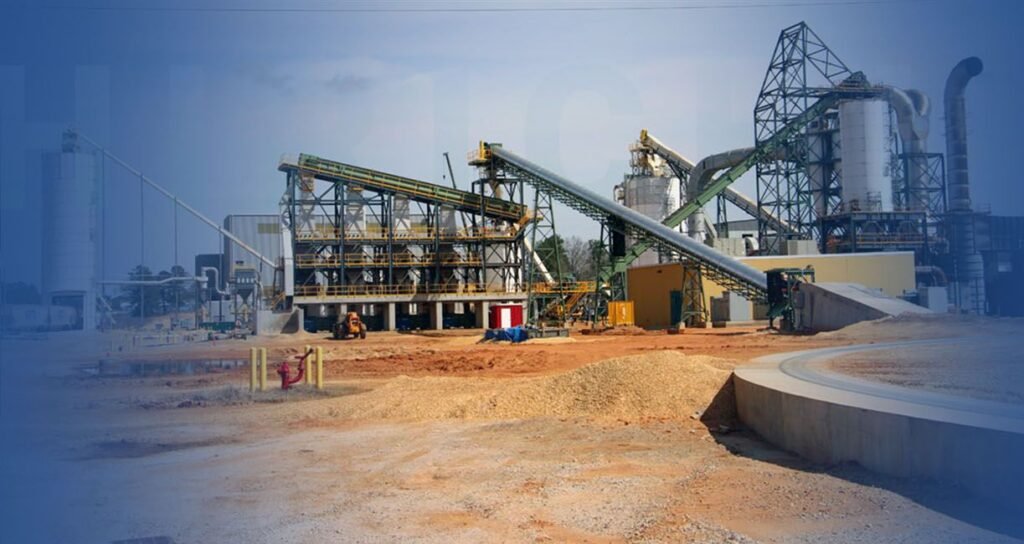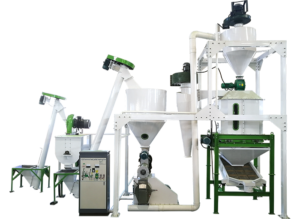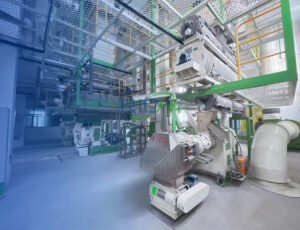
The rising global demand for wood pellets as a renewable energy source has led to the proliferation of wood pellet mill plants worldwide. However, the expenses associated with setting up and operating a 10 tons per hour (t/h) wood pellet mill plant can differ significantly by region. This article delves into the key cost factors influencing wood pellet mill plants in different locations, specifically highlighting China and the United States.
Key Cost Factors
- Equipment Manufacturing Costs
- Labor Costs
- Raw Material Availability and Costs
- Energy Costs
- Regulatory Environment
- Land and Construction Costs
- Maintenance and Spare Parts
- Environmental Compliance
Equipment Manufacturing Costs
- China: Known for its lower manufacturing costs, China significantly impacts the price of wood pellet mill equipment. Manufacturers like KMEC and GEMCO Energy can produce pellet mills more affordably due to lower labor and raw material costs. A 10t/h wood pellet production line in China may range from $500,000 to $1,000,000.
- United States: In contrast, U.S. manufacturers such as Bliss Industries and CPM face higher production costs, leading to pricier equipment. A similar 10t/h production line in the U.S. could cost between $1,000,000 and $2,000,000.
Labor Costs
- China: Labor costs in China are generally much lower than in the U.S., impacting both equipment manufacturing and operational expenses. Annual labor costs for a 10t/h plant in China might be around $100,000 to $200,000.
- United States: The U.S. has significantly higher labor costs, which affects overall operational expenses. Annual labor costs for a comparable plant in the U.S. could be between $400,000 and $600,000.

Raw Material Availability and Costs
- China: The availability and cost of raw materials like wood waste and sawdust are generally favorable in China, where these materials can be sourced at competitive prices. Annual raw material costs might range from $1,000,000 to $1,500,000.
- United States: The U.S. also has an abundance of raw materials, but transportation and regulatory factors can elevate costs. Annual raw material expenses may range from $1,200,000 to $1,800,000.
Energy Costs
- China: Energy prices in China tend to be lower, which contributes to reduced operational costs. Annual energy expenses for a 10t/h plant might be around $200,000 to $300,000.
- United States: Energy prices in the U.S. are generally higher, particularly in states with strict environmental regulations. Annual energy costs could be approximately $300,000 to $500,000.
Regulatory Environment
- China: While environmental standards in China are improving, compliance costs are generally lower compared to the U.S. Environmental compliance costs might add $50,000 to $100,000 annually.
- United States: The U.S. faces stricter environmental and safety regulations, which can elevate both initial setup costs and ongoing operational expenses. Environmental compliance costs could range from $200,000 to $400,000 annually.
Land and Construction Costs
- China: The costs associated with land and construction in China can vary but are generally lower than those in the U.S. Estimated land and construction expenses might range from $200,000 to $500,000.
- United States: In the U.S., land and construction costs are typically higher, especially in urban or industrial areas, with potential expenses ranging from $500,000 to $1,000,000. (Related post:turnkey wood pellet mill)
Maintenance and Spare Parts
- China: Maintenance and spare parts are usually more affordable and readily available in China due to local manufacturing. Annual maintenance costs might be around $50,000 to $100,000.
- United States: In the U.S., maintenance and spare parts can be more expensive, particularly if imports are required. Annual maintenance costs could be around $100,000 to $200,000.
Environmental Compliance
- China: Compliance costs in China are generally lower, although increasing regulations may lead to higher future expenses. Annual compliance costs might be around $50,000 to $100,000.
- United States: The stricter environmental regulations in the U.S. result in higher compliance costs, estimated at around $200,000 to $400,000 annually.
Total Cost Comparison
- China:
- Initial Investment: $500,000 to $1,000,000
- Annual Operational Costs: $1,400,000 to $2,200,000
- United States:
- Initial Investment: $1,000,000 to $2,000,000
- Annual Operational Costs: $2,200,000 to $3,500,000
Conclusion
The cost differences associated with establishing and operating a 10t/h wood pellet mill plant between China and the United States are significant. Initial investment costs in China can be 40-50% lower than those in the U.S., while annual operational expenses in China may be 30-40% lower.
However, these cost advantages must be weighed against other factors such as product quality, equipment durability, technological advancements, and long-term market access. As China continues to strengthen its environmental regulations, the cost gap may narrow in the future.
Investors and operators should carefully evaluate these factors alongside their specific market requirements and long-term business strategies when choosing between Chinese and U.S. wood pellet mill options. While the lower costs in China are appealing, decisions should not be based solely on initial price; the total cost of ownership and long-term operational considerations are crucial for success.






